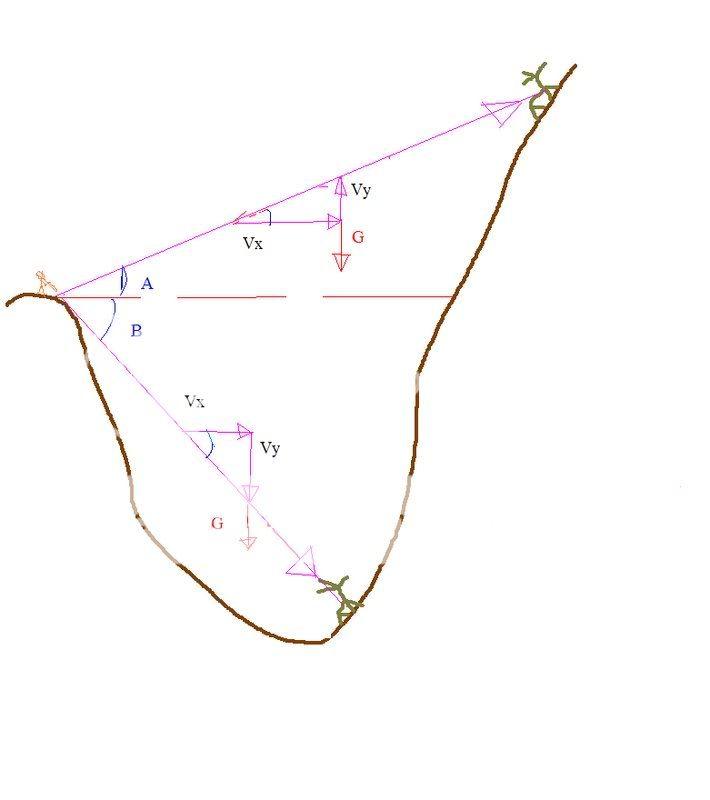Gun vs target, long steep shots with big elevation difference.
Assuming that one day I get the 7mm AM that I'm saving for and decide to shoot a steep 2000 yard shot.
At 10491 ft elevation with a 200gr rbbt (.9 bc) going 3350ft/sec at the muzzle, according to JBM online ballistics calculator, gives a bullet drop at 2000 yards of 854 inches with a 100 yard zero. That's if my target is also at 10491ft. (the same barometric pressure)
At 9306 ft elevation the drop is 870 inches over the same 2000 yard distance. Again, that's if my target is also at 9306ft. (the same barometric pressure)
The difference being 16 inches ( 870"-854" = 16") which seems like a fairly significant amount.
What if I shoot from the 10491ft station to the 9306ft station? 36 degrees downhill and 2000 yards away (verticle distance). How does the barometric pressure affect this drop? The air goes from thinner to thinker.
What if I shoot from the 9306ft station to the 10491 ft. station? 54 degree's uphill. How does the barometric pressure affect this drop? Now the air goes from thicker to thinner.
Most ballistics programs I've looked at correct for Line Of Sight angle by taking into account the vertical vs. horizontal distance, and trajectory…but do they account for the difference in barometric pressure between the gun and target?
I've yet to see one that asks for pressure inputs at both gun and target. Are they adjusting for this using standard elevation pressures or are they ignoring it? I'm assuming they ignore it.
For shots at closer distances < 500 (sounds strange saying 500 yards is close), it probably wouldn't make that much of a difference, but with the distances the 7mm AM is capable of shooting…. this has to come into play. How can you adjust for it?
Anyone have some insight on this? I can't find any information on this anywhere.
Assuming that one day I get the 7mm AM that I'm saving for and decide to shoot a steep 2000 yard shot.
At 10491 ft elevation with a 200gr rbbt (.9 bc) going 3350ft/sec at the muzzle, according to JBM online ballistics calculator, gives a bullet drop at 2000 yards of 854 inches with a 100 yard zero. That's if my target is also at 10491ft. (the same barometric pressure)
At 9306 ft elevation the drop is 870 inches over the same 2000 yard distance. Again, that's if my target is also at 9306ft. (the same barometric pressure)
The difference being 16 inches ( 870"-854" = 16") which seems like a fairly significant amount.
What if I shoot from the 10491ft station to the 9306ft station? 36 degrees downhill and 2000 yards away (verticle distance). How does the barometric pressure affect this drop? The air goes from thinner to thinker.
What if I shoot from the 9306ft station to the 10491 ft. station? 54 degree's uphill. How does the barometric pressure affect this drop? Now the air goes from thicker to thinner.
Most ballistics programs I've looked at correct for Line Of Sight angle by taking into account the vertical vs. horizontal distance, and trajectory…but do they account for the difference in barometric pressure between the gun and target?
I've yet to see one that asks for pressure inputs at both gun and target. Are they adjusting for this using standard elevation pressures or are they ignoring it? I'm assuming they ignore it.
For shots at closer distances < 500 (sounds strange saying 500 yards is close), it probably wouldn't make that much of a difference, but with the distances the 7mm AM is capable of shooting…. this has to come into play. How can you adjust for it?
Anyone have some insight on this? I can't find any information on this anywhere.

